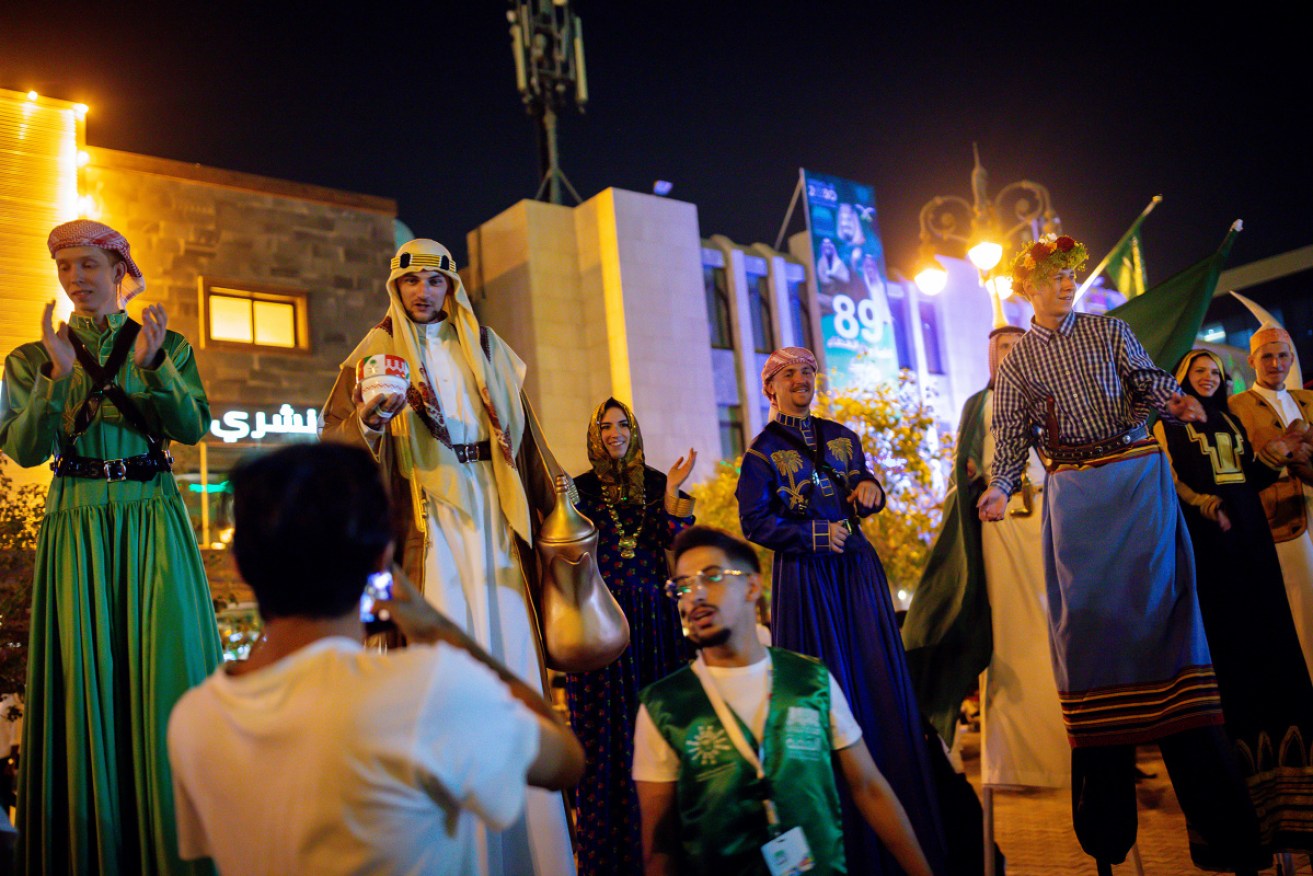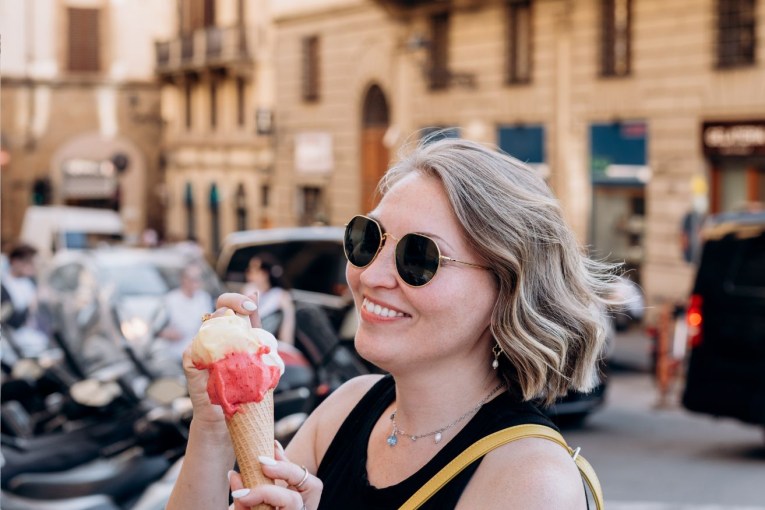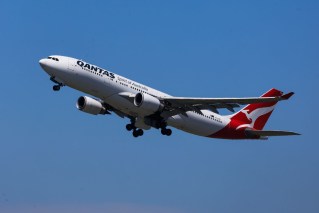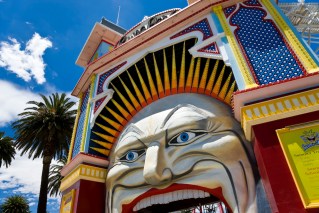Saudi Arabia wants to be your next holiday destination

The oil-rich kingdom is betting on tourism to broaden its economy, but will visitors come? Photo: Tasneem Alsultan
AL-UYAYNAH, Saudi Arabia – In a makeshift camp under a starry sky, Ghazi Al-Anazi talked about his experience in the fledgling Saudi tourist business. A decade ago, barely in his 20s, he started taking British business associates of his brother to see the wind-carved hills of the Saudi desert.
Now 31, he has a small fleet of SUVs, nearly a dozen employees and a self-taught ability to cater to the whims of visitors from many nations.
“I know what they want to do, and what I need to do about it,” he said, ladling out a dinner of barbecued chicken and Middle Eastern salads to a couple of dozen tourists from France, Ukraine, Malaysia and the United States.
Al-Anazi and his business, Ghazi Tours, take up to 900 visitors a month on treks like this one to a dry riverbed dotted with venerable acacia trees north of Riyadh, the Saudi capital.
But he is confident those numbers are about to multiply, as Saudi Arabia begins to open itself up as a major tourist destination. The government recently began issuing tourist visas for the first time, a remarkable shift for a traditionally shuttered society.

Tourists climbing a rock formation in the desert near Riyadh. Photo: Stanley Reed
And it goes far beyond that: Billions of dollars are being poured into vast tourism projects throughout the kingdom, from flashy resorts to new airports, in a bid to shift the economy away from its dependence on the petroleum industry and the government jobs it finances.
The move toward tourism was devised by Crown Prince Mohammed bin Salman, the kingdom’s 34-year-old chief policymaker, whose Vision 2030 program seeks to diversify the economy, draw in more outside investment and expand the private sector.

Families visiting the King Abdulaziz Center for World Culture, also known as Ithra, in Dhahran. Photo: Tasneem Alsultan
The Saudis are hiring international real estate executives and introducing elaborate advertising campaigns to try to put themselves on the map. Already, there are signs the push is paying off: Saudi hotel room sales in the first nine months of 2019 increased 11.8 per cent from the same period last year.
But a question hanging over the whole initiative, some travel experts say, is how many people will want to visit an ultraconservative kingdom that’s the subject of intense criticism over its treatment of dissenters and women, that restricts the use of alcohol and until recently barred unmarried couples from sharing rooms.
“I call it the new yellow oil,” said Amr Al Madani, the chief executive of the Royal Commission for Al-Ula, referring to its vast golden vistas.

Mr. Al-Anazi arranges for visitors to feed camels and take selfies. Photo: Stanley Reed
Al-Ula includes the evocative ruins of an ancient city of carved rock tombs, called Mada’in Saleh. Like Petra, a popular tourist draw in southern Jordan, the city was built by the Nabataeans about 2000 years ago.
The vast region has only 45,000 residents. There are some existing resorts, and France’s Accor chain recently agreed to manage one.
Madani is planning an investment of up to $20 billion, from a mix of public and private sources, to finance airport expansion, hotels and other facilities to accommodate up to 2 million visitors drawn to archaeological sites as well as food and cultural attractions.
An even more ambitious scheme is under construction on Saudi Arabia’s western coast. The Red Sea project covers a remote area with 190 kilometres of coastline, more than 90 islands and extensive coral reefs that could one day be a diving and snorkeling paradise.
The Saudis want to put four dozen luxury hotels there, including 14 in a first phase, forecasting that these facilities will eventually contribute around $6 billion a year to the economy. Accor has agreed to participate, and the developers say they are in talks with other international hotel groups.

A private beach in Jeddah on the Red Sea. Photo: Tasneem Alsultan
The Public Investment Fund, the crown prince’s $320 billion vehicle for economic makeover, owns the Red Sea scheme and is providing some of the initial capital. Proceeds from the recent sale of a stake in the national oil company, Saudi Aramco, are likely to flow into the investment fund, and could finance other tourist projects.
Crown Prince Mohammed chairs the Red Sea Development Co. as well as the Al-Ula commission. John Pagano, Red Sea’s chief executive, said the prince knew the area “intimately” from excursions on his yacht.
Saudi Arabia’s conservative social mores will also be less in evidence, the developers say. The travel industry anticipates that alcoholic beverages, which are prohibited in Saudi Arabia, may eventually be sold in these new areas just as they are in Dubai, the Persian Gulf travel and business hub, whose mix of luxury and modernism appears to influence the crown prince’s thinking.

Al-Ula includes ruins of an ancient city of carved rock tombs. Photo: Tasneem Alsultan
Pagano said he was not counting on the availability of alcohol. He did say that “what you typically see in the West” is likely to be permitted at Red Sea resorts. In other words, alcohol aside, travelers will be able to do as they please – for example, women will be able to sunbathe in bikinis.
Both the Red Sea and Al-Ula projects aspire to attract wealthy, ecology-minded tourists willing to pay a premium for a novel and relatively unspoiled destination. Some travel analysts say this approach may pay dividends.
“This planet is running out of places to go,” said Philip Wooller, Middle East director for the travel research firm STR.
Aman Resorts, a Swiss-based hotel group that caters to the wealthy and celebrities, is setting up three establishments in Al-Ula, with a plan to open in 2023.
“There is a huge amount of culture to be discovered and explored, and that is exactly what our guests want to do,” said Anna Nash, a spokeswoman for the company.

Qamar Ahmed runs a combination antique store, art gallery and coffee shop in Khobar. Photo: Tasneem Alsultan
Still, Wooller said, the Saudis are starting “at the very very beginning.”
Although the kingdom accommodates about 15 million international visitors a year – the bulk of them for Muslim pilgrimages – tourism has largely been limited to side trips after business meetings.
A huge training and hotel-building exercise is going to be required to meet the government’s goal of 100 million domestic and international visits by 2030, more than double the 41 million of 2018.
That is a big leap in a kingdom that until recently has had little tourism.
“If we had to live off tourists, we would be dead,” said Qamar Ahmed, who runs a combined antique store, art gallery and coffee shop called Desert Designs in Al-Khobar in eastern Saudi Arabia.

A performance at a park in Taif, a city near Mecca. Photo: Tasneem Alsultan
Moreover, while the crown prince has given a green light to some changes, including allowing women to drive, some potential visitors may be alienated by the brutal killing of journalist Jamal Khashoggi in 2018 by Saudi agents, and other repressive measures like jailing critics of the government.
“Saudi Arabia won’t be an easy sell for a lot of tourists,” said Henry Harteveldt, a travel consultant at Atmosphere Research in San Francisco.








